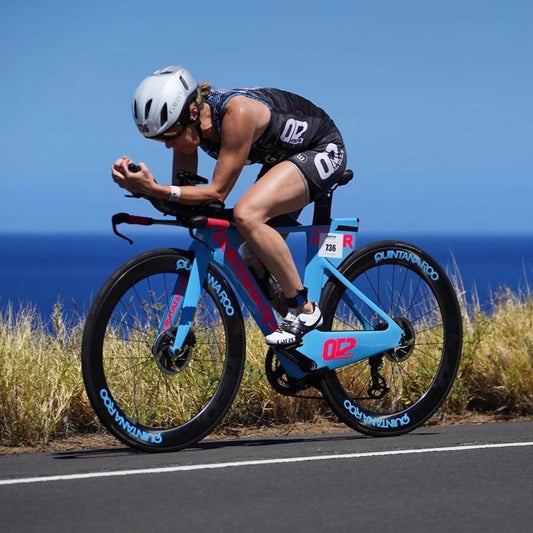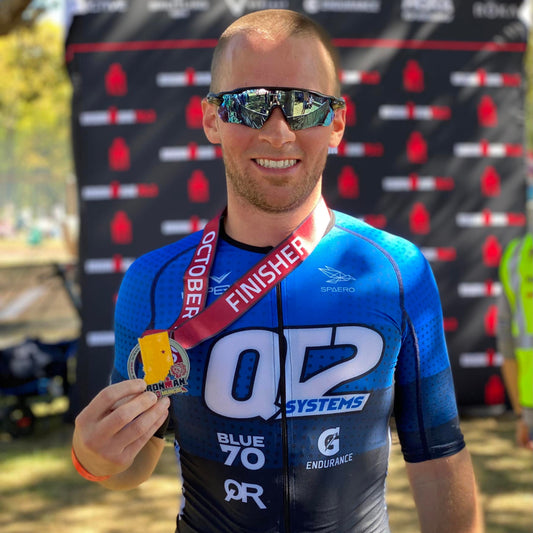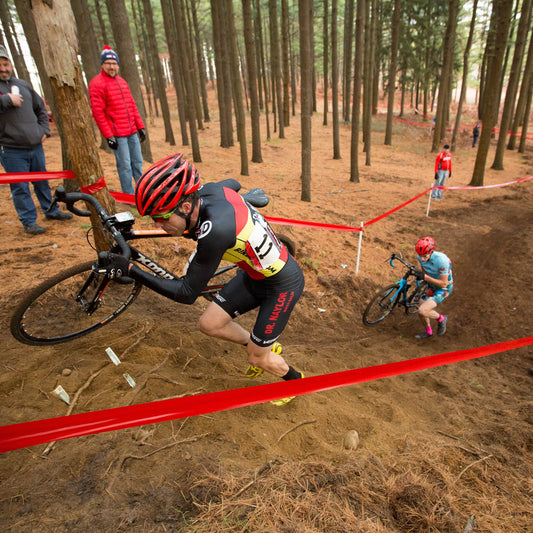“I climbed a mountain, and I turned around…”
These words of Fleetwood Mac’s song, “Landslide,” have carried me over many a mountain peak in the Adirondack Mountains of Upstate New York, where I love to hike in the winter. My 23 years spent hiking in these mountains have only been outdone by the years spent pursuing one of my other loves--the sport of triathlon. Many who know me are familiar with my background as both a triathlete and a coach. Few know me as a hiker, my love for the mountains, and the Adirondacks and Lake Placid region being a central part of my life. Far fewer realize that it is the many long and cold winter hikes, struggling to find a trail, coming off a summit in the dark, and sometimes not even summiting that have fueled the triathlete and coach I am today.
The beauty about the Adirondacks is the vastness of the mountain range. With so many beautiful peaks to choose from, I am left to decide what I want and what type of experience I am looking for. As I make my decision, I often reflect on past experiences while acknowledging my desire to experience a new opportunity. It is a process all too familiar to me as I navigate and plan my goals leading into any triathlon season--that desire to find a new challenge that builds on past races and allows me to work towards a new goal. Once the destination has been determined, my new focus becomes planning out the route to get there. Will this be the shortest and possibly steepest route? Or will I decide to take the longer and more gradual climb? It all depends on how my fitness is when starting the journey and what obstacles I might be prepared to deal with and work through to choose the shorter path. It is not uncommon for there to be more than one route to reach the summit.
In both hiking and the sport of triathlon, so many get so caught up in the goal of reaching the summit, of crossing that finish line, that the journey to get there is often overlooked. My years spent with the mountains have taught me to keep one eye on the destination, and the other focused on what is in front of me, taking it all in. I pause to inhale the smells of the pines that envelop me. I put aside my own labored breath and listen to the sounds of the snow crunching and squeaking underfoot due to the cold temperatures. The cold that surrounds me forms heavy frost on my lashes, often making it hard to blink, and the air hurts my lungs as I try to keep a regular pattern to my breathing that will allow me to keep going as I continue to climb higher and higher for the next eight hours. Rather than stare down at my feet, I make sure to pause and notice the sights of the frozen waterfalls, the ridge, and valleys that lead to other mountains. I make sure to never get caught up on my mission and miss out on this part of the experience. There have been many mountains ascended throughout my life, but these moments have sustained my love for hiking.
And so it is with triathlon…
The race becomes your summit, the destination to be reached only after meticulous planning of how to get there. While reaching the summit is the ultimate goal, it is the journey to get there that stays with me--finding the motivation and sheer will to keep training through cold winter months, coming to various junctions and having to decide which path to take, the grueling days of trying to balance it all. Even then, the summit is never guaranteed. There are obstacles and setbacks during the race, yes, but there are far more that can occur during a season. I had had times when I thought I’d made the right choice on deciding on when and how hard to train only to be injured. Then comes having to face the decision of whether to race while not adequately prepared or, worse yet, while injured. These same decisions in hiking have far more weight, one decision potentially being a difference between life or death. Knowing how hard to push and when to listen to what the body is telling me has been a continual work in progress. The more peaks I climb, races I do, or experience I gain, the more well-informed are those decisions.
At times, the climb is steep, and it hurts. I work to gain elevation only to then lose it as I round the bend. These consistent setbacks mirror those I have endured throughout my 30+ years of being involved in triathlon, which begs the question--why bother? Why bother doing all that work, mentally willing myself through moments of fatigue and suffering only to lose all momentum moments later?
We often hear the adage, “Put one foot in front of the other.” Endurance athletes and hikers alike understand this may very well be the only way to get through a tough stretch. During these times, the answers become clear as to why we do what we do. Setting milestones along the way is a training strategy l use to keep my compass pointed in the right direction—walking when I can no longer run but not giving up, swimming to the next buoy, or riding for one more mile. I use this same strategy for the long hikes that are often longer than any Ironman I have completed. Whether it be hiking to the next lookout, next to food break, or next mile, all these milestones add up to reaching that destination. If I look to summit too early or look to the finish line too soon, it seems too far away and impossible to achieve. Having these smaller goals along the way help break down what may seem an insurmountable task into something way more manageable and helps me keep my forward momentum in life.

Now that I have grown older and have children of my own that hike. I have realized that as they get stronger and faster and hop over the boulders with such effortless enthusiasm, it is no longer I that needs to encourage them. They are the ones now waiting and, when needed, reaching out with a hand to help me. I am not envious of what they can now do but rather proud that I have been able to help them succeed and share in my love of the mountains. Something that happens so often in triathlon is that we look at what we can no longer do or how we can no longer go as fast as those around us.
When athletes are ahead of me or take the lead, I remember that they are on their own journey to the summit, and I am on mine. Rather than use their performance as a means to admonish myself for not performing better, I recognize and appreciate what my body and mind are capable of doing while embracing the strength and determination of those around me.
The mountains and the adventures that come with it are done so without that judgment. It reminds me that I will be able to do this for many years to come, and when I am with my family, I don’t need to worry about not being the athlete that I once was.
If the stars align and I am fortunate to summit, I take Stevie Nicks’s advice and “I turn around.” I look around and take the time to enjoy all the milestones that took place. I make sure I celebrate my success. When reflecting on the many hikes and races I’ve been so fortunate to experience in my life, it is never crossing the finish line or reaching the summit that I most fondly remember. It is those moments of appreciating the small victories and achievements throughout the process that stay with me.
Sometimes looking beyond the sport and looking to other loves in your life to draw on the comparisons can help to overcome setbacks, motivation slumps and help you to appreciate the goodness that has come from the journey.
My advice - Find your own summit but try not to forget to enjoy the views along the way.
This post was written by Coach, Karen Allen-Turner.





